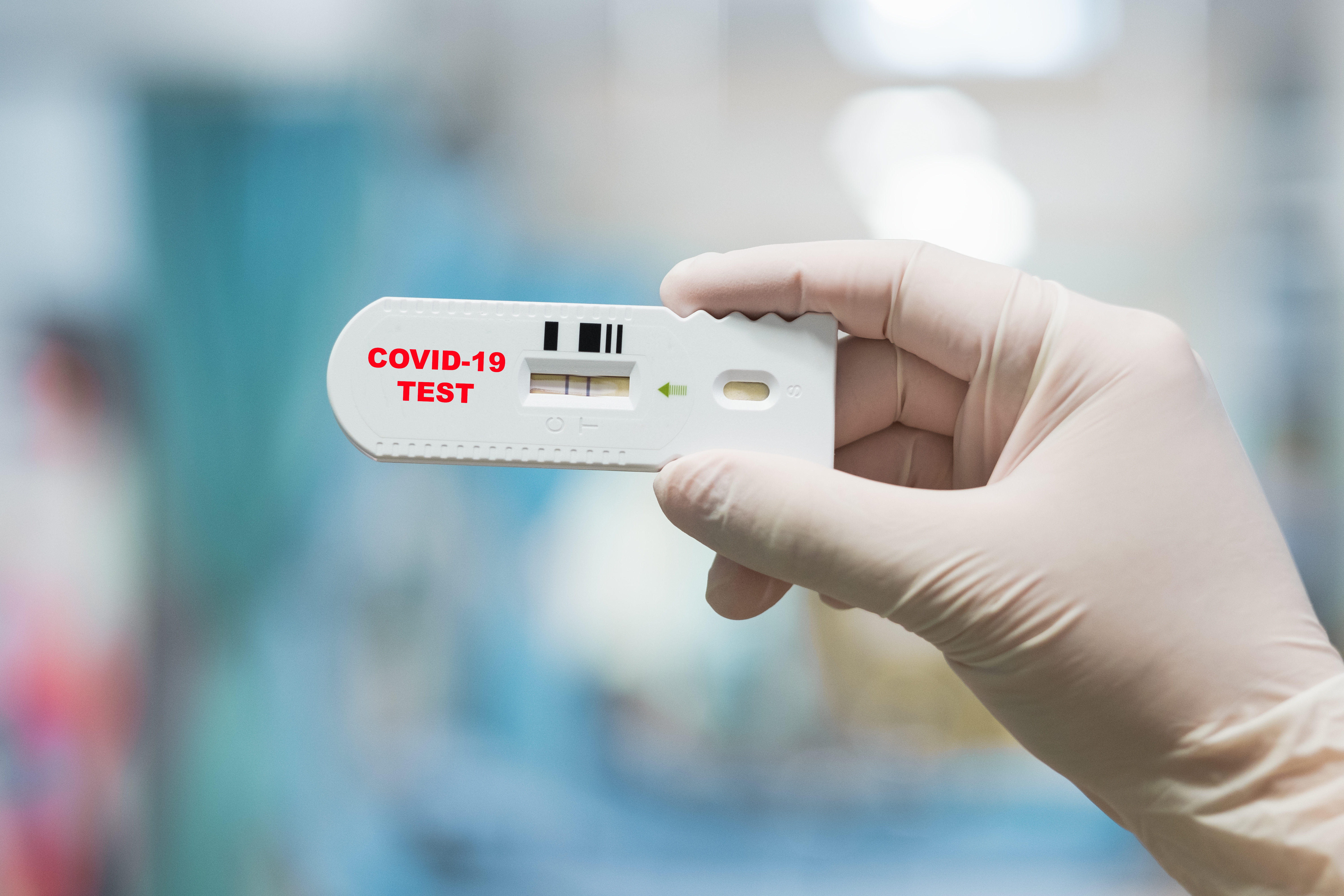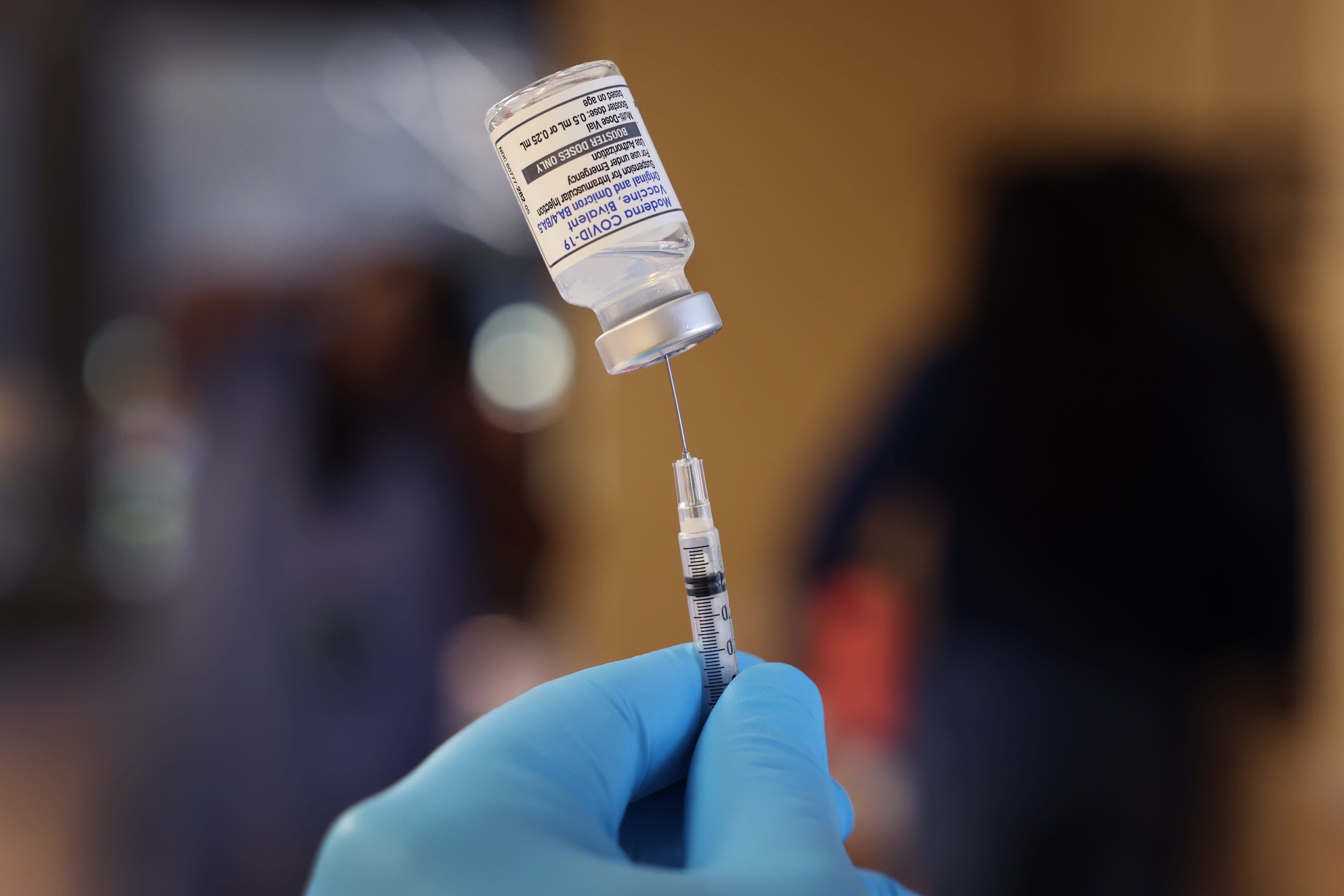A new and rare COVID variant that is just starting to be seen here in the U.S. "bears watching" because of how many mutations it has, according to two top Boston doctors.
So far, the new BA.2.86 strain, nicknamed "Pirola," has not shown any increased transmissability, but it might be able to bypass immunity from the COVID-19 vaccine or a recent infection with a different variant, the Centers for Disease Control and Prevention says.
The World Health Organization has ranked BA.2.86 as a "variant under monitoring," its second-highest tier of COVID variants, because of its "large number of mutations identified."
"BA.2.86 bears watching because of how many mutations it has," Dr. Shira Doron of Tufts Medical Center said. "Although the number of mutations is large (more than 30), which is reminiscent of what we saw when Omicron first emerged, we are not seeing an explosion in the growth of this variant so far."
"The new BA.2.86 variant is getting a lot of attention as we see a blip in COVID-19 incidence because it has been identified from people in geographically diverse settings (Europe, South Africa, North America) and because it has such a large number of mutations as compared to XBB.1.5," added Dr. Daniel Kuritzkes, chief of infectious diseases at Brigham and Women's Hospital. "It is important to stress, however, that so far it has been isolated from only a handful of people."
Is the new COVID variant in the US?
At last count, there were only 24 instances of the new variant found worldwide, and in the U.S. cases have only been identified in Virginia, Michigan and Ohio. However, U.S. wastewater samples from New York City and Ohio have indicated the presence of BA.2.86. And New York health officials said this week that it is "almost certainly" already circulating in the city.
"Some experts have suggested that, although this variant is surely immune evasive, and may even warrant its own Greek letter, the many mutations could also come at the expense of its own fitness, including contagiousness. That would be a good outcome, but we never assume anything with SARS CoV2 and we remain vigilant and prepared," Doron said.
She added that the BA.2.86 variant is in "no way" related to the recent increase in COVID cases, hospitalizations and wastewater levels in the Boston area.
That surge appears to be fueled by newer strains of the virus like EG.5, an omicron subvariant that accounted for 17.3% of all cases as of last week, according to the CDC. But it remains unclear how well the updated vaccines expected to arrive this fall will protect against BA.2.86, which has been identified in a very small number of cases.
"While it is certainly important for us to keep an eye on this variant, it is impossible to predict if it will take off in the way that the original Omicron variants did or whether it will sputter along and be eliminated as happened with Gamma, Mu and Lambda," Kuritzkes noted. "And, of course, it’s too early to say whether it is more transmissible or differs in virulence compared to other currently circulating variants. Once again, only time will tell."
Here's what we know about the new BA.2.86 variant so far:
What is the COVID variant BA.2.86?
BA.2.86, aka Pirola, was first detected in late July, and has since caused a handful of infections worldwide.
It appears to have descended from the omicron BA.2 sublineage, which caused surges of the virus in early 2022, Dr. Andrew Pekosz, a virologist at Johns Hopkins University, told TODAY.com.
Over the last few weeks, the CDC says the variant has been detected in a small number of samples from infected people and wastewater in several countries, including the U.S. "The variant is notable because it has multiple genetic differences compared to previous versions of SARS-CoV-2 and it has been detected in several locations within a short amount of time," the agency said.
Last week, the World Health Organization and the CDC said they are tracking BA.2.86 because it has 36 mutations that distinguish it from XBB.1.5. So far, there is no evidence that it spreads faster or causes more serious infections than earlier versions.
Current risk assessment
According to the CDC's latest risk assessment issued this week, existing tests used to detect and medications used to treat COVID-19 continue to be effective with this variant.
"Scientists are evaluating how previous immunity from vaccinations or past infections protect against this new variant. Tests of how well antibodies block the virus from infecting cells give us one measure of how well one part of the immune system might handle BA.2.86. Along with antibodies, other parts of the immune system have important roles in protecting people from the most severe outcomes of COVID-19. These other parts of the immune system have been less affected by viral evolution and are not predicted to have decreased activity against BA.2.86," the CDC said.
The CDC said its current assessment is that the updated COVID vaccine, which will be available in mid-September, "will likely be effective at reducing severe disease and hospitalization."
What are the symptoms of Pirola?
The good news is that the CDC says there is currently no evidence that the BA.2.86 variant is causing more severe illness.
"It is too soon to know whether this variant might cause more severe illness compared with previous variants. CDC is closely monitoring hospitalization rates to identify any potential early signals that the BA.2.86 variant is causing more severe illness," the agency said. "At this time, locations where this variant have been detected have not experienced increases in transmission indicators (e.g., cases, emergency department visits) or hospitalizations out of proportion to those seen in neighboring locations. However, it is early in the emergence of this variant and too soon to evaluate impacts based on these indicators."
Common symptoms of other COVID-19 variants and subvariants include:
- Cough
- Sore throat
- Runny nose
- Sneezing
- Fatigue
- Headache
- Muscle aches
- Altered sense of smell
Is BA.2.86 more transmissible?
"The assessment as to the transmissibility of BA.2.86 is unchanged," the CDC said in its latest assessment. "With only a limited number of sequences detected, it is too soon to know how transmissible this variant is. Detection across multiple continents suggests some degree of transmissibility. This is notable since scientists have not detected broad international spread of many other highly diverged lineages, which can arise in immunocompromised persons with prolonged infections."
Treatment and prevention
If licensed/authorized by the Food and Drug Administration and recommended by the CDC, updated vaccines are expected to be available as early as mid-September at your local pharmacy or doctor’s office.
So what can you do to protect yourself and others as we learn more?
At this time, the CDC says it doesn't know how well the new variant spreads, but they know that it spreads in the same way as the other variants. That means people can still take the following actions to protect themselves and others from infection:
- Get your COVID-19 vaccines, as recommended
- Stay home if you are sick
- Get tested for COVID-19 if you are sick
- Seek treatment if you have COVID-19 and are at high risk of getting very sick
- If you choose to wear a mask, wear a high-quality one that fits well over your nose and mouth
- Improve ventilation
- Wash your hands
The shots still need approval from the FDA and the CDC, which will set eligibility guidelines. An independent panel of advisors to the CDC is meeting on Sept. 12 to vote on a recommendation for those guidelines.




